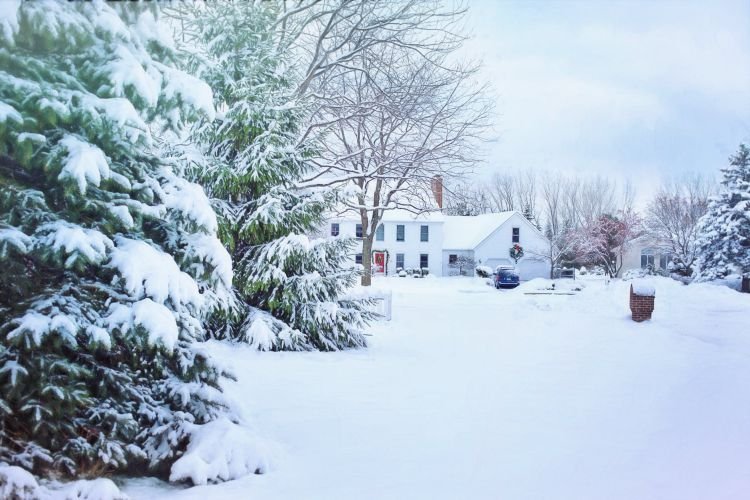 Winter has kicked into full gear, and as the temperatures continue to drop and send shivers through our bodies, even when staying inside the comfort of our homes, people will have to take extra pains to keep themselves warm. As the cold intensifies, we become more prone to falling ill.
Winter has kicked into full gear, and as the temperatures continue to drop and send shivers through our bodies, even when staying inside the comfort of our homes, people will have to take extra pains to keep themselves warm. As the cold intensifies, we become more prone to falling ill.
However, unfortunately, as the energy prices continue to hike up, managing to keep your house warm enough for the winters seems impossible without also emptying your wallet. Heaters, HVAC systems, and radiators, all require electricity to run in order to keep your house warm. But there are a few methods you can use to enjoy a cozy, warm winter without having to spend a fortune.
So, to help you with cozying up to your house for the winters, the following are the four inexpensive ways you should try.
Trap heat through insulation
No matter how many times you heat your home, if gaps aren’t plugged properly, heat will just dissipate. However, by using insulation, you can trap the heat within your home for much longer. As the roof and walls are prime places where heat is lost, padding them with insulating material is the best way for foolproof heat insulation.
However, don’t forget to insulate your windows as well as they are also major heat leakage spots that need proper insulation. While house insulation is a big one-time investment, it is worth it because it can save you a fortune in energy costs that you will likely incur if you don’t properly insulate.
Insulation installation can be messy, and you don’t want your belongings to get damaged or accumulate dust over their surfaces from all the drilling and installing. In such situations, it is better to call for a moving service so that they can store your belongings somewhere safe while you get insulation work done in your house.
Use curtains
Wall insulation can only minimize heat loss to a certain extent, as retaining heat indefinitely is impossible. However, further insulation can be ensured by using curtains to keep heat from escaping. Heat retention requires that you use thick and durable curtains, with thermal lining, and not thin, see-through types that don’t trap much heat at all. If you don’t want to spend your money on buying thicker curtains, you can create one on your own, DIY-style, by lining your existing curtains with cheap fleece.
During the daytime, slide back those curtains so that you get an ample amount of heat from the sun. Doing so will help you consume less energy-intensive heat sources during the day, which will drastically reduce your energy consumption and bill.
Add rugs
Rugs can be a fashionable addition to a modern home and are also cozy and comfortable. But more importantly, rugs can reduce heat loss that occurs through the floor and is a truly inexpensive way to warm up your home. As much as 10% of the heat produced inside your home will be lost through the floor. It’s especially important to insulate your floor with rugs or carpets if it’s made of tiles and hardwood, and also when gaps appear in wooden floors because that’s a major source of heat loss.
However, for effective insulation, it’s crucial to select the right rug, as not all have the capability to properly cover floor gaps and trap heat. It’s best to choose thick rugs, as their higher level of insulation provides more warmth retention.
Even more importantly, you should consider the material of the rug. Rugs with small air gaps within their fibers prove to be the most effective, as air is an excellent insulator. However, if you want an even cheaper solution to floor insulation, get insulated rug pads. These are placed underneath your existing rugs to further enhance the insulation effect.
Avoid maximizing the thermostat
As soon as winter approaches, many of us tend to crank up the thermostat to maximize heating—a mistake with financial consequences in the form of higher energy bills. It should be realized that the thermostat temperature has little to no effect on the overall heating of your home. Instead, it only makes your furnace work harder, leading to a significant increase in energy consumption.
So, if you want to keep your home warm inexpensively, it’s essential to only moderately increase the thermostat temperature. In fact, you may benefit from turning the thermostat dial down a few notches more than you normally would. According to research, reducing the thermostat temperature only by 1°C can cut your energy bill cost by as much as 10%. If you want to maintain a certain degree of warmth inside your house, while also cutting down on costs, don’t go any higher than 18°C on the thermostat.
Reverse your ceiling fan’s direction
Turning on the fan in the winter seems to be counterintuitive. However, reversing your fan’s turning direction can actually help you keep your house warmer. As a result, instead of throwing air downwards toward you, the fan will suck it upwards. This will move the cold air at the bottom upwards while pushing the warm air near the ceiling toward you.
This is known as convective flow, which will help keep your house warm for longer. Combined with heaters, this technique can work extremely well. Usually, heated air is lighter than cooler air, and it would naturally move upward, leaving the temperature below to drop.
Conclusion
Considering the exponentially rising energy costs and expensive heating systems, staying warm and cozy this winter might seem like a far-fetched dream for some who don’t want to spend a fortune on energy bills. But, if you use the above-mentioned methods for heat insulation and retention, you might turn your house into an abode of warmth and joy where you can host your most memorable holiday parties.




